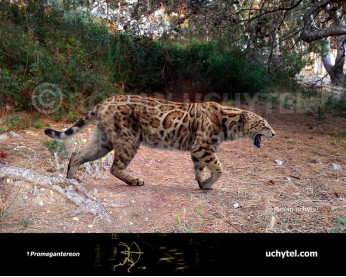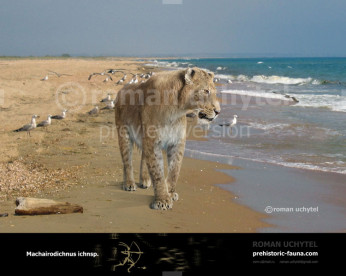Amphimachairodus kurteni
234234Amphimachairodus kurteni, Machairodus kurteni (†Amphimachairodus kurteni (Sotnikova, 1992))
Order: Carnivora
Family: Felidae
Subfamily: Machairodontinae
Tribe: †Homotherini
Genus: †Amphimachairodus
Temporal range: late Miocene (Asia)
Machairodus (Amphimachairodus) kurteni is described from the late Miocene locality Kalmakpai in eastern Kazakhstan (Ex USSR). Evolutionary changes appear to have taken place in the genus Machairodus during the Turolian. In the morphology of the dentition, M. kurteni is intermediate between Machairodus and Homotherium .
Amphimachairodus is an extinct genus of large machairodonts belonging to the clade known as Eumachairodontia (true saberteeth) along with relatives like Smilodon and Homotherium. It is also a member of the tribe Homotherini within Machairodontidae and is most closely related to such species as Xenosmilus, Homotherium itself, and Nimravides. It inhabited Eurasia, Northern Africa and North America during the late Miocene epoch.
Amphimachairodus was about 2 metres long and probably hunted as an ambush predator - its legs were too short to sustain a long chase, but it most likely was a good jumper. It probably used its canines to cut open the throat of its prey, severing the major arteries and possibly crushing the windpipe. Its teeth were rooted to its mouth and were not as delicate as those of most other saber-toothed cats of the time, which had extremely long canines that hung out of their mouths. The fangs of Amphimachairodus, however, were able to easily fit in its mouth comfortably while being long enough to be effective for hunting.
Journal Reference:
M. V. Sotnikova (1992). A new species of Machairodus from the late Miocene Kalmakpai locality in eastern Kazakhstan (USSR) Ann. Zool. Fennici 28:361 -369
Оплата
У Вас є кілька зручних способів купівлі зображення: кредитна чи дебетова картка Visa, Mastercard, Maestro; PayPal або банківський переказ
Amphimachairodus kurteni, Machairodus kurteni (†Amphimachairodus kurteni (Sotnikova, 1992))
Order: Carnivora
Family: Felidae
Subfamily: Machairodontinae
Tribe: †Homotherini
Genus: †Amphimachairodus
Temporal range: late Miocene (Asia)
Machairodus (Amphimachairodus) kurteni is described from the late Miocene locality Kalmakpai in eastern Kazakhstan (Ex USSR). Evolutionary changes appear to have taken place in the genus Machairodus during the Turolian. In the morphology of the dentition, M. kurteni is intermediate between Machairodus and Homotherium .
Amphimachairodus is an extinct genus of large machairodonts belonging to the clade known as Eumachairodontia (true saberteeth) along with relatives like Smilodon and Homotherium. It is also a member of the tribe Homotherini within Machairodontidae and is most closely related to such species as Xenosmilus, Homotherium itself, and Nimravides. It inhabited Eurasia, Northern Africa and North America during the late Miocene epoch.
Amphimachairodus was about 2 metres long and probably hunted as an ambush predator - its legs were too short to sustain a long chase, but it most likely was a good jumper. It probably used its canines to cut open the throat of its prey, severing the major arteries and possibly crushing the windpipe. Its teeth were rooted to its mouth and were not as delicate as those of most other saber-toothed cats of the time, which had extremely long canines that hung out of their mouths. The fangs of Amphimachairodus, however, were able to easily fit in its mouth comfortably while being long enough to be effective for hunting.
Journal Reference:
M. V. Sotnikova (1992). A new species of Machairodus from the late Miocene Kalmakpai locality in eastern Kazakhstan (USSR) Ann. Zool. Fennici 28:361 -369

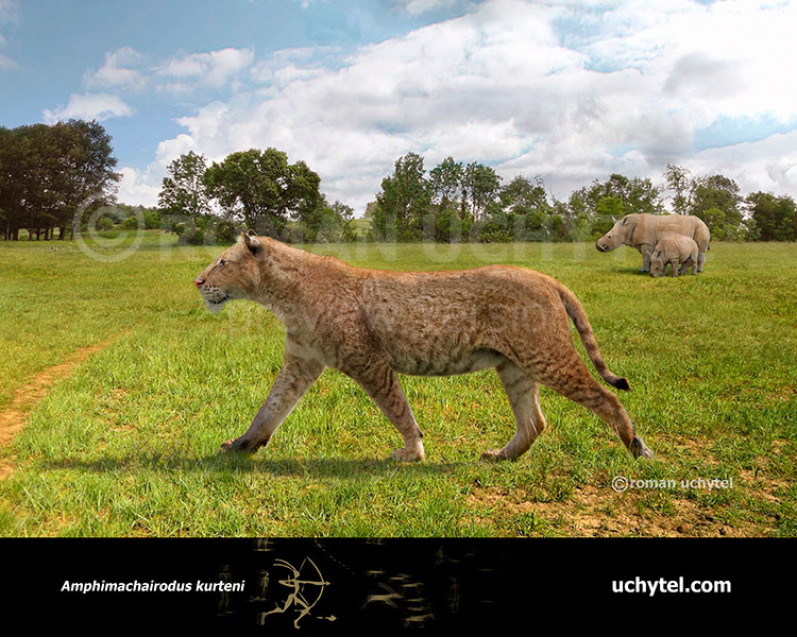
-797x638.jpg)

-70x56.jpg)
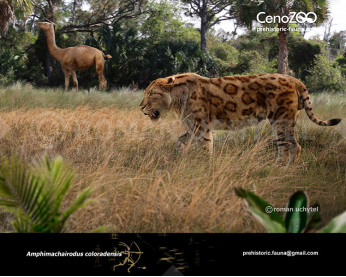
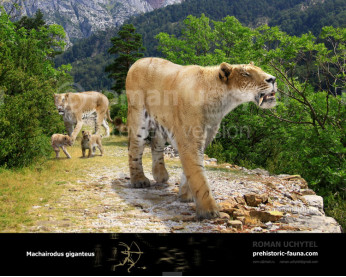
-346x277.jpg)
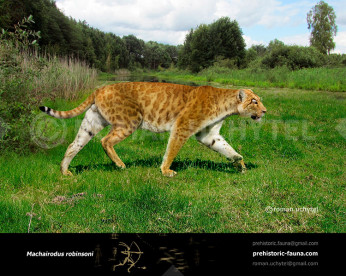
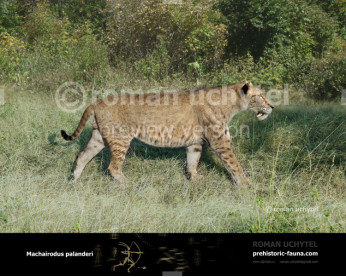
-346x277.jpg)
